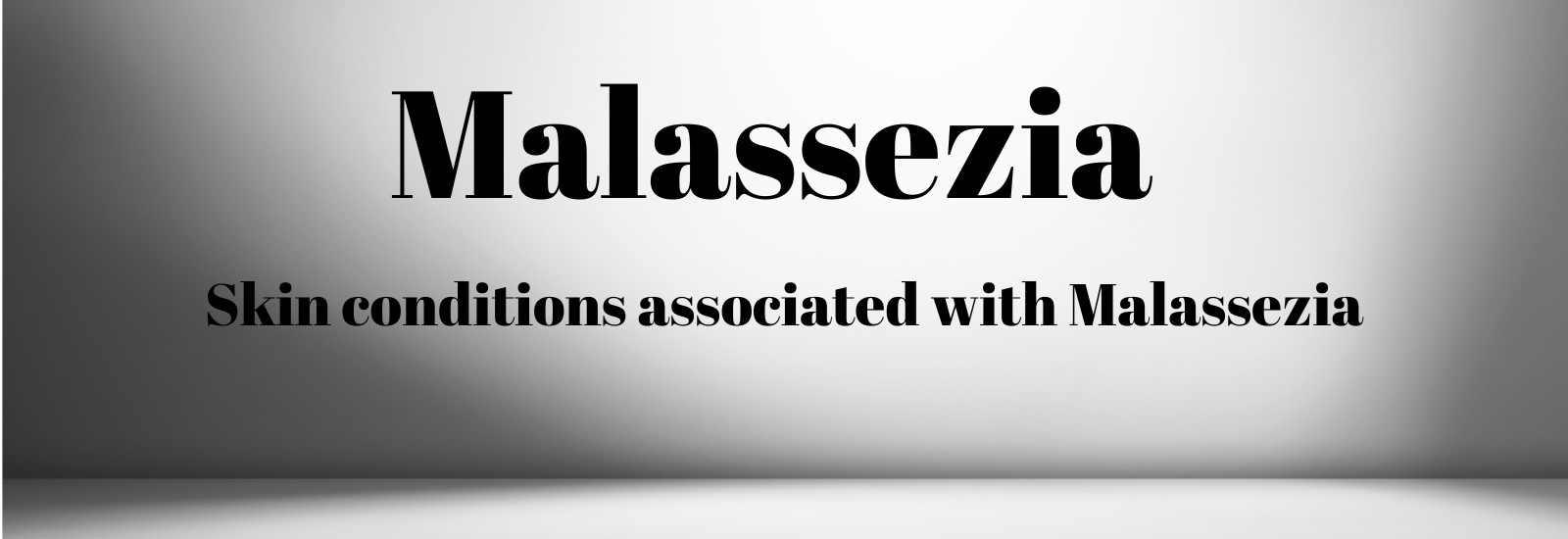What is Malassezia?
Malassezia is a genus of fungi that are commonly found on the skin surfaces of many animals, including humans. They are considered part of the normal skin flora, but under certain conditions they can multiply rapidly and cause skin diseases.
There are at least 14 identified species of Malassezia that inhabit human skin. The most common species are M. globosa, M. restricta, and M. sympodialis. These fungi feed on fatty acids in sebum, the oily secretion produced by sebaceous glands in the skin. They are usually found in highest abundance in areas with many sebaceous glands, such as the scalp, face, and upper back.
In healthy individuals, Malassezia fungi live commensally on the skin without causing any issues. The population is kept in check by the skin’s natural defenses. However, if the fungi grow out of control, they can cause irritating skin conditions like dandruff, seborrheic dermatitis, pityriasis versicolor, and Malassezia (pityrosporum) folliculitis. Factors that allow overgrowth include increased sebum production, immunosuppression, and use of oils on the skin.
Causes and Risk Factors
Malassezia is a fungus that naturally lives on the skin of most adults. While it usually does not cause any issues, certain factors can trigger it to grow out of control and cause infections.
Oil Production
Malassezia feeds on fatty acids in oils secreted from sebaceous glands in the skin. People who produce excessive sebum are more prone to Malassezia overgrowth. The fungus thrives in oil-rich areas like the scalp, face, and upper back.
Humidity
Warm, humid environments provide ideal conditions for Malassezia to multiply. Sweating heavily can also increase fungal growth. That’s why Malassezia infections tend to flare up in hot, humid weather.
Immunosuppression
Those with weakened immune systems are more vulnerable to Malassezia infections. Diseases like HIV/AIDS, autoimmune disorders, and cancers requiring chemotherapy can all suppress immunity and allow the fungus to proliferate.
Other Risk Factors
While anyone can get Malassezia, certain groups are more predisposed. This includes infants, teenagers, and adults with oily skin types. Those with underlying medical conditions like diabetes, obesity, and cystic fibrosis also face higher risk. Using oils and moisturizers excessively can fuel fungal growth as well.
Types of Malassezia Infections
Malassezia can cause various skin conditions, the most common being:
Pityriasis versicolor
This fungal infection leads to scaly, discolored patches on the skin. It often affects the back, chest, neck, and upper arms. The patches can be tan, pink, brown or white in color. They may be slightly itchy but are often asymptomatic. The discoloration is caused by the fungus interfering with pigment production in the skin.
Seborrheic dermatitis
This condition causes red, itchy, flaky skin. When caused by Malassezia, it often affects oily areas like the scalp, face, upper back and chest. It can lead to stubborn dandruff.
Malassezia folliculitis
This causes small, itchy, pimple-like bumps. They usually form on the chest, back, arms, and legs. This is an inflammation of hair follicles due to the fungus. It’s most common in teenagers and young adults. The bumps may be filled with pus.
Signs and Symptoms
Malassezia can cause various skin conditions that result in rashes, itching, and flaky skin. The most common locations for these symptoms include:
Scalp – Can lead to dandruff and seborrheic dermatitis characterized by greasy, yellow scales. Itching and irritation are common.
Face – Causes seborrheic dermatitis around the nose, eyebrows, ears, and other oily areas. Red, greasy patches and pimples may occur.
Upper back and chest – Results in pityriasis versicolor, which appears as scaly, discolored patches that can be pink, tan, or brown.
Groin, buttocks, and skin folds – Leads to intertrigo, an inflammation and rash in warm, moist areas. The rash is often reddish and scaly.
Hands – Causes dyshidrotic eczema, where small blisters develop on the palms and sides of the fingers. The blisters are itchy and may peel.
The rashes caused by Malassezia tend to be aggravated by factors like humidity, sweat, oil production, and immunosuppression. Symptoms often worsen with changes in temperature or seasons. The severity can range from mild dandruff to intense itching and flaky plaques covering large areas.
Diagnosis
Diagnosing malassezia infections starts with a physical exam of the affected area. The doctor will look for signs of fungal infection such as red, itchy, flaky skin or dandruff. They may use a special lamp called a Wood’s lamp, which causes the yeast to glow a yellow-green color.
A skin culture can also be taken to test for the presence of malassezia. A small skin scraping is obtained and sent to a lab, where it is cultured to allow any yeast to grow. Looking at the culture under a microscope can reveal if malassezia is present.
It’s important to distinguish malassezia infections from other skin conditions like eczema, psoriasis, or seborrheic dermatitis. The location of the rash and the appearance of the skin can help differentiate malassezia from other causes. The skin culture and Wood’s lamp test can provide confirmation that it is a fungal infection. Getting an accurate diagnosis allows proper antifungal treatment to be prescribed.

Treatment Options
There are several treatment options for Malassezia infections:
Antifungal Creams and Shampoos
Topical antifungal creams, lotions, and medicated shampoos can be used to treat Malassezia on the skin and scalp. Some commonly prescribed topical antifungals contain ketoconazole, selenium sulfide, ciclopirox, or zinc pyrithione. Using an antifungal wash or shampoo daily can help reduce symptoms and prevent recurring infections.
Oral Antifungal Medications
For severe or stubborn Malassezia infections, oral antifungal medications may be prescribed. These are taken by mouth and work throughout the body to treat fungal overgrowth. Some common oral antifungals used for Malassezia are fluconazole, itraconazole, and terbinafine. Treatment is usually needed for 2-4 weeks.
Lifestyle Changes
Making certain lifestyle adjustments can help keep Malassezia under control. It’s important to bathe regularly with a medicated cleanser to wash away excess yeast and skin oils. Avoiding skin and hair products that contain oils or thick moisturizers is also recommended. Tight clothing that doesn’t allow the skin to breathe should be avoided. Keeping skin dry and cool can prevent overgrowth of Malassezia as well.
Natural Remedies
Malassezia thrives on oils, so using natural oils that have antifungal properties can help treat infections. Some popular natural remedies include:
Tea tree oil: This essential oil contains terpinen-4-ol, which gives it strong antifungal properties. Dilute tea tree oil with a carrier oil like coconut oil and apply it to affected areas. It may help treat dandruff, seborrheic dermatitis, and other fungal infections.
Coconut oil: The lauric acid in coconut oil gives it both antibacterial and antifungal qualities. Look for organic, virgin coconut oil. Apply a small amount to affected skin and let it soak in. Coconut oil is moisturizing, so it may also help soothe itchy skin.
Probiotics: There is some evidence that taking probiotic supplements can help restore balance to skin and treat fungal overgrowths like Malassezia. Look for broad-spectrum probiotics with strains like Lactobacillus and Bifidobacterium.
Diet changes: Because Malassezia feeds on oils, limiting dietary fats from sources like fatty meat, dairy, and oils may help. Focus on low-glycemic foods like fruits, vegetables, and lean proteins. Stay hydrated and limit sugary foods. An anti-inflammatory diet supports skin health.
Other natural remedies like apple cider vinegar, aloe vera, and antifungal essential oils may also provide relief from Malassezia symptoms. Always dilute essential oils and test them on a small patch of skin first to check for reactions. Consult a doctor before using natural remedies.
Skin Care for Malassezia
Keeping the skin clean and moisturized is an important part of managing malassezia infections. However, many skincare products contain ingredients that can exacerbate symptoms. It’s best to use gentle, fragrance-free products formulated for sensitive skin.
Some ingredients to look for include:
Zinc pyrithione – This ingredient has anti-fungal and anti-bacterial properties to help treat malassezia on the skin. It is commonly found in anti-dandruff shampoos.
Sulfur – Sulfur also has anti-fungal and anti-microbial effects. It helps dry out lesions and calm inflammation.
Salicylic acid – This beta hydroxy acid acts as a gentle exfoliant to remove dead skin cells and sebum buildup. This prevents malassezia from thriving.
Niacinamide – Also known as vitamin B3, niacinamide helps strengthen the skin barrier and reduces inflammation.
Colloidal oatmeal – Oatmeal soothes itchiness and irritation caused by the infection. It also absorbs excess oil on the skin.
Skincare ingredients to avoid include oils, butters, and thick creams or ointments. These can feed malassezia and worsen breakouts. Stick to lighter, gel-based moisturizers instead. Maintaining clean yet hydrated skin is key for managing this condition.
Lifestyle Tips for Managing Malassezia
Malassezia thrives on oily skin, so it’s important to follow some lifestyle tips to help manage oil production and keep skin clean and dry. Here are some suggestions:
Use oil-free skincare and cosmetic products. Avoid moisturizers, serums, sunscreens etc that contain oils. Stick to gel-based or oil-free options.
Wash your face twice a day and after sweating to remove excess oil and sweat. Use a gentle, fragrance-free cleanser.
Shower immediately after exercise or sweaty activities. Make sure to wash sweaty areas like the chest and back.
Wear loose-fitting, breathable fabrics like cotton to allow sweat to evaporate and not accumulate on skin. Avoid tight clothing that traps sweat.
Keep humidity low with air conditioning or a dehumidifier. High humidity encourages fungal growth.
Blotting papers can help absorb excess facial oil throughout the day. Carry some with you for on-the-go oil control.
Avoid heavy, oily hair products. Use dry shampoo to absorb oil at the scalp.
Don’t share towels, bedding, hairbrushes etc with others to prevent spread of fungus.
Following these simple lifestyle habits can go a long way towards controlling oil and sweat, the main factors that allow Malassezia to overgrow. Keeping skin clean and dry will help minimize flare-ups and symptoms.
When to See a Doctor
You should see your doctor if your rash spreads or worsens, to confirm the diagnosis, or to discuss prescription treatment options. Some key reasons to schedule an appointment include:
The rash is not improving or continues to spread after 1-2 weeks of self-care and over-the-counter remedies. Malassezia infections that don’t respond to initial treatment may require prescription antifungal creams or oral medications.
You develop swelling, pus, increased pain, warmth, or redness, which could indicate a secondary bacterial infection. This requires evaluation and oral antibiotics.
You have a compromised immune system or diabetes, making you more vulnerable to fungal infections. Your doctor can provide guidance on preventing flare-ups.
You get frequent infections. Your doctor can help identify any underlying causes.
The rash is severely itchy or interfering with sleep and daily life. Your doctor can provide stronger prescription relief.
You want to confirm it’s Malassezia through skin scrapings or culture tests. Microscopic examination can identify the yeast.
Seeking timely medical care is recommended if basic self-care strategies don’t improve your symptoms. With prescription treatment, most Malassezia rashes can be effectively managed.
 Rated 0 out of 5¡A la Venta!Add to basket
Rated 0 out of 5¡A la Venta!Add to basket$10.00Original price was: $10.00.$5.99Current price is: $5.99. Rated 0 out of 5¡A la Venta!Add to basket
Rated 0 out of 5¡A la Venta!Add to basket$10.00Original price was: $10.00.$5.99Current price is: $5.99.



